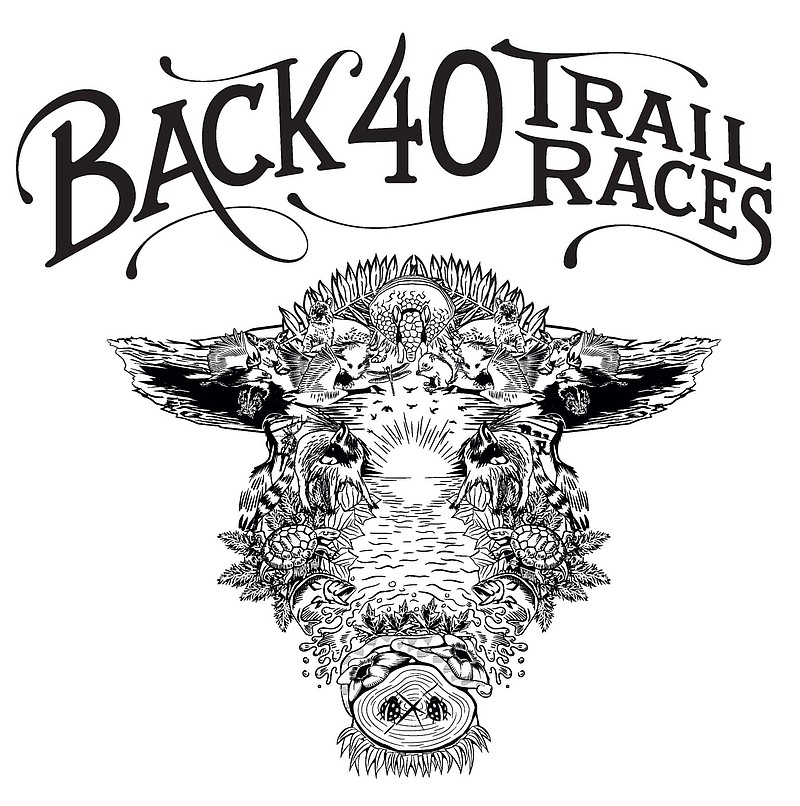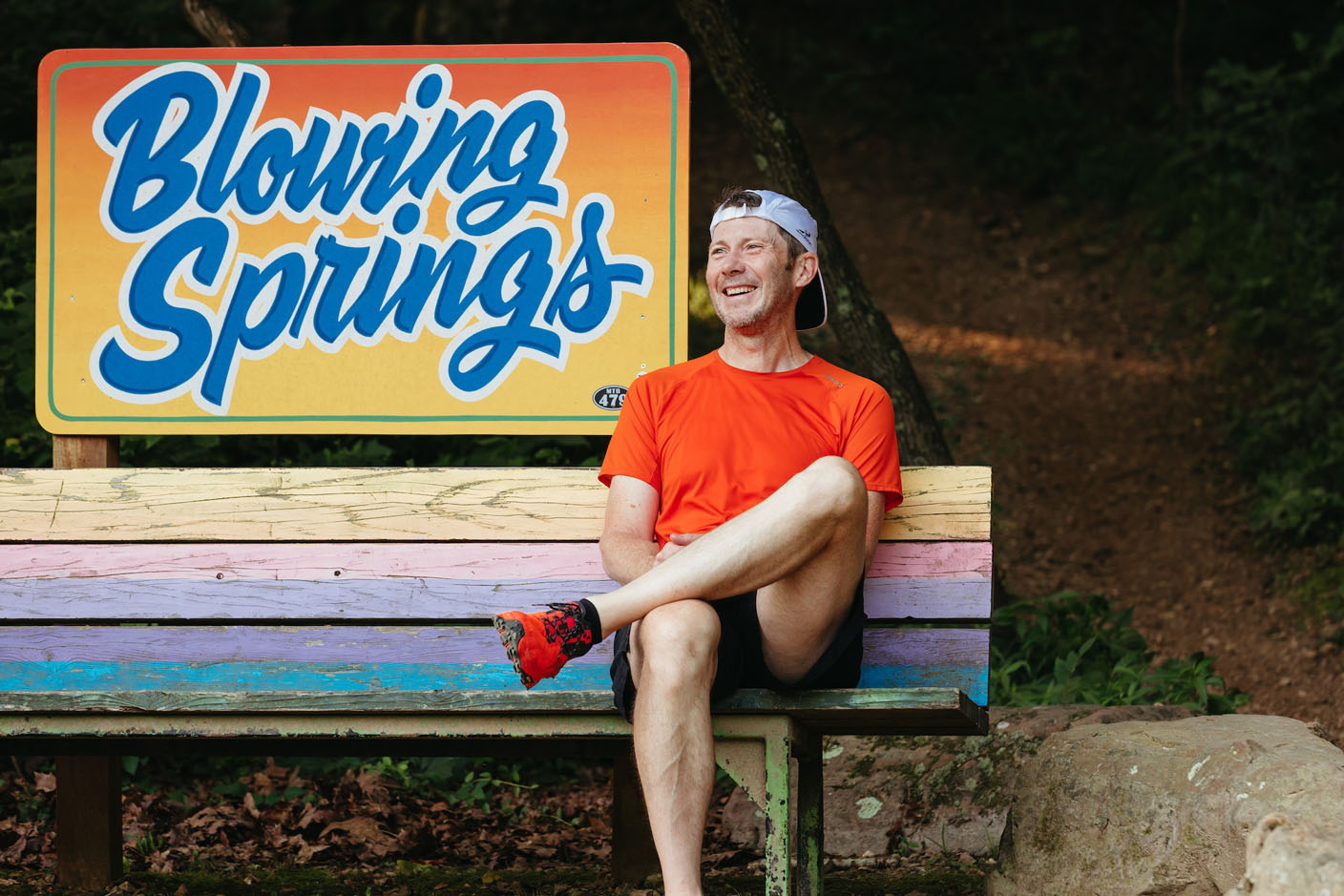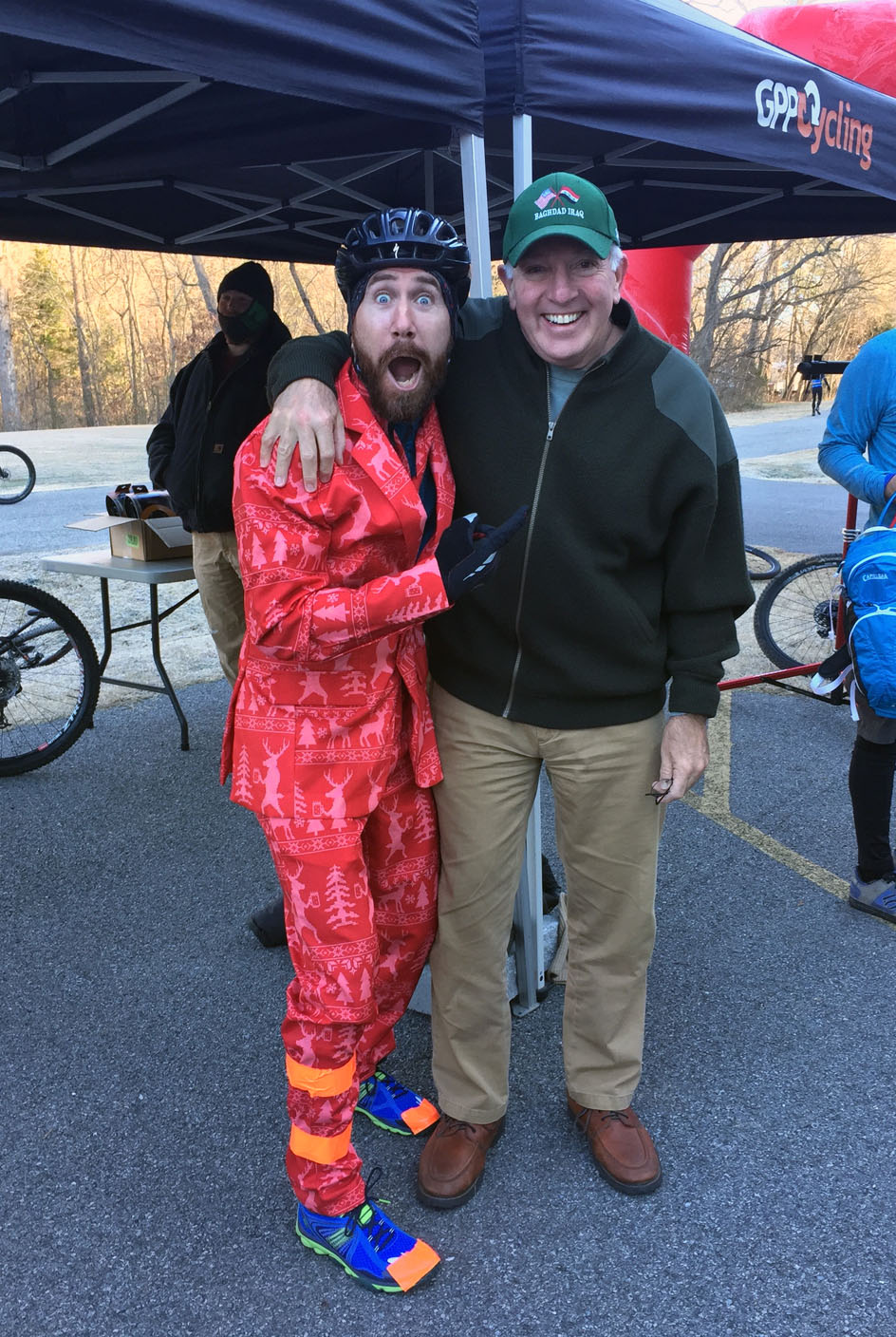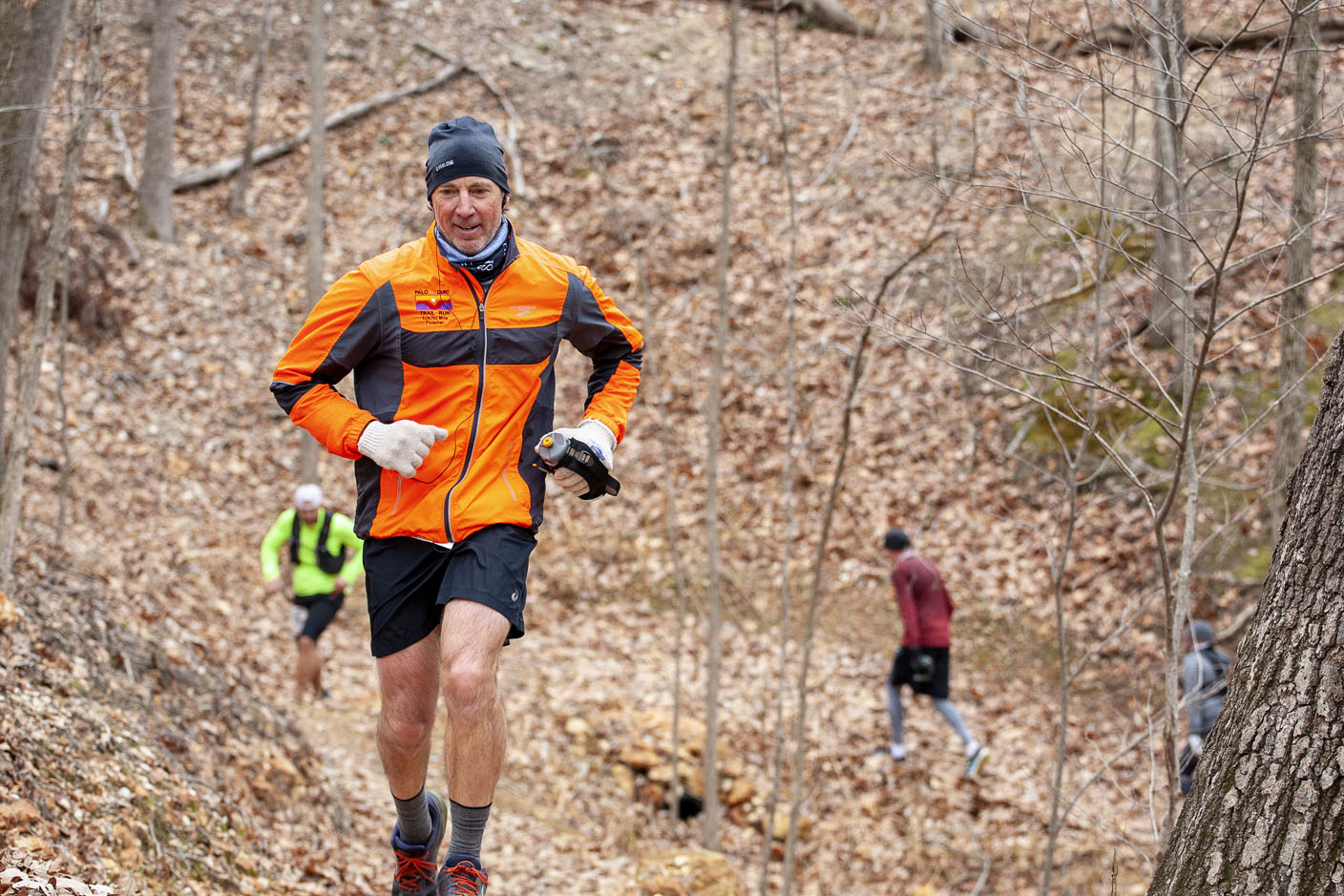This is a story about two trail runners, one with the natural ability of speed on foot and the other with determination and desire. Together, they have created a trail running event for the community they love, aimed at fostering a love of trail running in others.
The Back 40 Trail Races, in its 6th year, is coming up Nov. 12 on the Back 40 Trails in Bella Vista. The event offers trail running options for every level, from beginner to seasoned ultrarunner.
Mike Rush, owner of Rush Running Company, started his business after running track for the University of Arkansas and then a stint working for a shoe company. If you live in northwest Arkansas and know him, chances are you're a runner too. And, chances are, you weren't always a runner, but he helped you become one. His real passion lies not in selling shoes, but in building a community of runners, which he says are unlike any other group of people.
The 800-meter distance was Rush's sweet spot while running for the Razorbacks. After, he got into road marathons (26.2 miles) while he worked for a shoe company and then opened his own business, where he later made a friend who introduced him to trails and ultrarunning – running any distance beyond the marathon distance.
Rush ran his first trail race – a 25K race (about 15 miles) -- at Dogwood Canyon in Missouri. He won that race and was hooked. He later snagged a U.S.A. Track and Field (USATF) medal at the Bandera 100k race in Texas and has logged thousands of miles running and racing in distances from 3.1 to 100 miles.
He took over what is now War Eagle Trail Race in Rogers in 2010, sure there were more people interested in running farther distances and that he could really make something of it. The then-8-mile race turned into one that today offers an ultra distance of 50k, about 32 miles.
"You don't get to hear the voices in your head or talk to God unless you run an ultra distance," he said. "It's the challenge of it. It's not about time or place. It's about you physically getting yourself through that distance."
Then, when you get to what he calls "The Dark Place," the beauty is participating in the race is what snaps you out of it and gets you refocused.
"You roll into an aid station where everybody is treating you like you're in first place, even if you're not. They are sacrificing their time for your every need. You're hurting, chaffing, crying, cussing, and then you've got all these people catering to you, helping to get you back on the trail in a better place," he said.
James Reeves, co-race director of War Eagle and Back 40 along with Rush, knows something about that.
Reeves dabbled in cross country in high school but chose to play soccer instead. He showed up to run with the cross-country team just because he liked running but didn't compete. In college, he quit running altogether and after about a decade and a step on the scale, he decided he needed to pick it up again.
He lived in Texas and worked as a firefighter, where he regularly ran what he thought was a 6-mile route from the station. It turned out to be only 4 miles but, oblivious, he went ahead and signed up for the Ft. Worth marathon. He found a training plan, made it to the 18-mile-long run and suffered from Achilles tendon trouble. So, he stopped running.
Months later, he tried again and hurt again. After more time with less running passed, he discovered running trails along the Frisco Trail in Joplin, and frequented a regular 5-mile route after moving there. When he moved again to NWA, he – again – started training for the same marathon he had yet to even start.
He ran the Razorback Greenway during his training, knowing very little about things like proper hydration and footwear.
"I wondered why I felt like garbage after every run," he said, mentioning his regular consumption of only Gatorade and energy drinks and no water.
One day he noticed two guys running toward him on the Greenway. One guy crossed the street and disappeared into the woods where Reeves didn't yet know there were trails. The other guy approached him and asked what Reeves was training for, since they regularly saw one another running that route.
"The guy who ran into the woods was Mike (Rush)," Reeves said.
The other guy told Reeves to go see Rush at his shop. Reeves popped in later and learned, among other mistakes, he was running in shoes that were too small. Within the next year, and with the help and urging of Rush and other NWA runners, Reeves found himself running his first 50k distance at War Eagle.
"It was a horrible experience," he said. "I still didn't know what I was doing. I sat in the woods at the last aid station for an hour and a half, waiting for someone to give me a ride to the finish. No one did."
It was a volunteer that offered to walk with Reeves to the finish. Together, they crossed the finish 15 minutes before the cut-off time. He wasn't last, and a few more stragglers came in after him. One in particular "looked like he was dying," Reeves said.
"I'm a former medic, so I followed this guy into the Visitor's Center and asked if he was ok," he said.
He was, and today they remain friends who have run "literally thousands of miles together," Reeves said.
Reeves has gone on to finish two 100-mile races. The first was easier than that first 50k at War Eagle, he said.
"I never thought about stopping. I just accepted that it hurt just as much to run as it did to walk," he said.
"Running – yeah, it's physical – but it's more mental than physical," Rush said. "The only thing you have to beat is your own mind.
"You just keep putting one foot in front of the other and battle those demons upstairs. Unless you're attacked by a bear or something, it's the only thing that will make you drop out. If you keep moving forward, you will finish."
THE BACK 40 BEGINNINGS
"When the Back 40 (Trails) were open, we were like this is our back yard and we run it all the time – let's do this right here!" Rush said. "We love putting on races, gathering people, the interaction of trail running."
With the cooperation and support from the city, volunteers and the friends they have made along the way, it was a "total community-led team effort that turned this race into something that attracts people from nearly 20 different states every year," Rush said.
When the event began in 2016, it featured two days of competition – running and mountain biking. Rush wanted to add an enhanced "level of pain we could bring people to," he said. After sticking with it for three years, that model proved not to be sustainable, and they dropped the mountain biking element. And this year, the format has changed again from a two-day running event to just one day.
"The mountain bikers weren't showing up to run. It was the runners that were biking. I was surprised the majority of the mountain bikers were from out of state," Rush said.
A two-day event is hard on volunteers, and Rush said that was the biggest motivation to change to a one-day event this year. It's the volunteers that put their events above others, he said.
"I have been to hundreds of other races," Rush said. "I have not only put on these races but ran them myself. Never have I experienced the volunteers and aid stations like we have here."
Reeves said it's hard to pick which is better – the community of runners that shows up to race or the volunteers that show up to work.
"You can't disconnect the volunteers from the participants," he said. "We could do everything perfect but if you don't have good volunteers, it's going to fail. You can mess stuff up and if the volunteers are top-shelf, that's what people will remember."
It's the volunteers, he added, that get people to the finish who don't think they can do it. As race directors, they get to see those people doing things they never thought they could do.
"To play some part in that is pretty cool," Reeves said.
"If you're running a 5k," Rush said, "you don't get the chance to have a conversation that could be hours long. If someone falls (during a trail race), you help them up. Being first or being in the middle of the pack -- both still hurt and still feel good to finish. That's what makes trail running so great. Everybody is getting a wonderful, different experience out of it."
The Back 40 Trail Races offers four trail running distances this year – 5 miles, 13 miles, 20 miles and 40 miles. All races will start and finish at the Sugar Creek Soccer Park. With registration, racers get a shirt with a cool logo designed by a runner and artist here in NWA and a finisher's medal, plus the best volunteer service at each aid station and all-you-can-eat catfish, chicken and hushpuppies, thanks to Catfish Johns, at the finish line.
This year, those hanging around the finish line get to grab a cup of hot coffee while they wait for their runner, thanks to Java Dudes.
"A shorter race distance can introduce trail running, if someone is curious about racing and trail racing," Rush said. "Then we have something for the fast runners who want the half-marathon distance. There's an intermediate distance for those scared to go much above the half marathon, who will then get hooked and go on to the 40-miler."
The 40-mile distance is for the hard core who like to suffer because they have a screw loose, he added.
Registration is open until Nov. 9, and available online at https://back40trailrace.com/, where individuals can also find more information about the race, like timing and course maps.
Racers can expect to see Rush at the start and finish, his booming voice yelling at you to pay attention to the course markings, don't leave a scrap of trash on the trails and get across that finish. When you're done and crying because that was the hardest thing you've ever done but you did it, even 15 minutes before cutoff, he will be there to celebrate with you.
Reeves will turn up in other places throughout the day – at aid stations, emptying trash, or somewhere along the course just where a runner might need him.
An ultrarunner struggling to keep going will always remember a guy in the woods who helped him reach a goal he was about to give up on, and that could end up changing his life completely.




